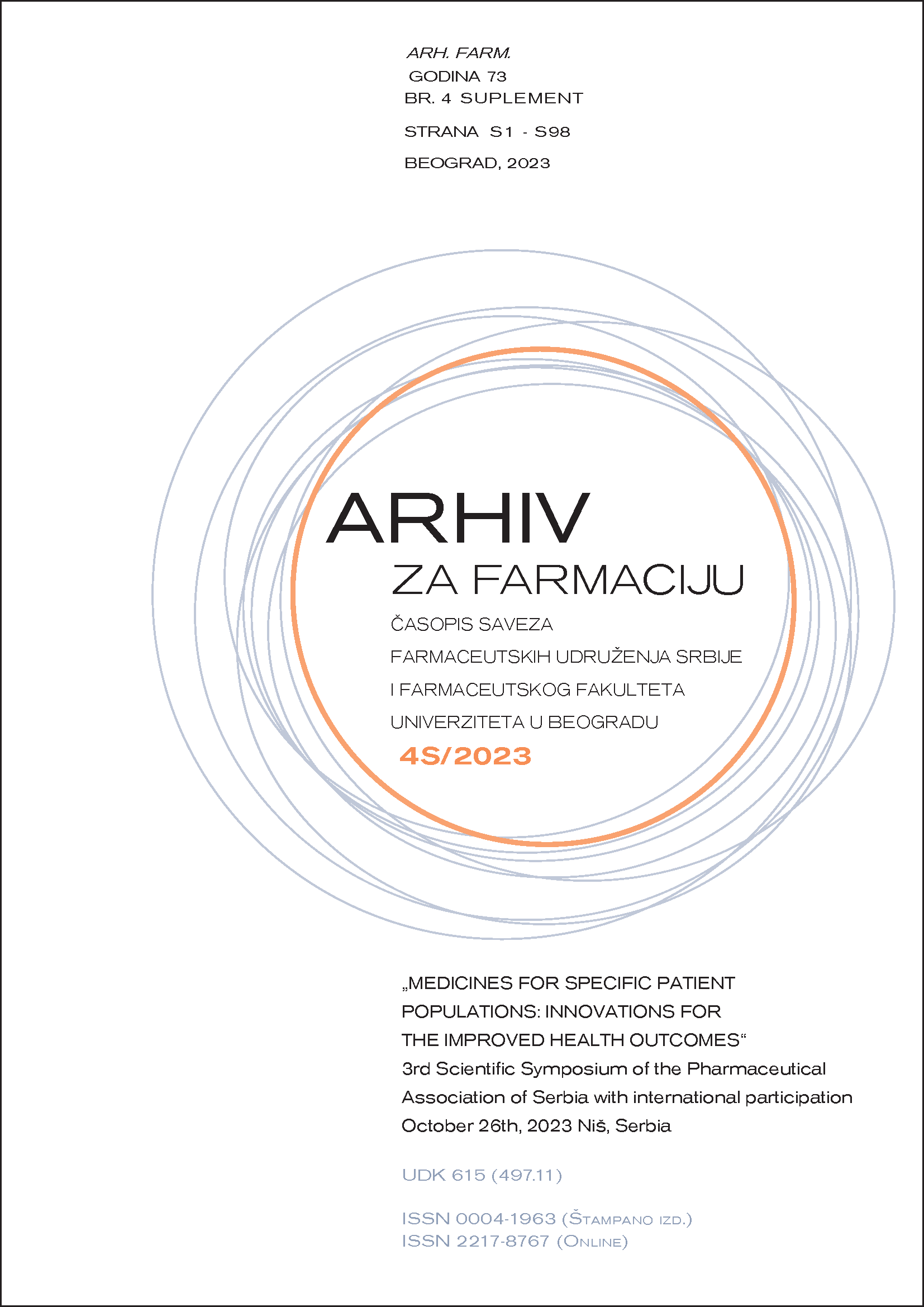AN INVESTIGATION INTO REPRESENTATION AND COMPOSITION OF COMMERCIALLY AVAILABLE ORODISPERSIBLE TABLETS ON THE MARKET OF EUROPEAN COUNTRIES
Abstract
Orodispersible tablets (ODTs) are relatively new solid dosage forms that disintegrate rapidly in the oral cavity, without the addition of water (1). The aim of this research was to analyze ODTs available on the market in representative European countries (Germany, Spain, Slovenia, Croatia, Serbia). The research was based on investigation of commercially available ODTs and their composition. In Germany, 563 ODT products are available (28 different active ingredients), while only 19 ODTs are present in Serbia (8 different active ingredients). The majority of ODTs contain antipsychotic drugs (26.6–54.2%), particularly olanzapine, presumably due to better patient compliance. The only exception is Spain, where antimigraine ODTs are the most frequent (22.3%), which may be attributed to easier administration and swallowing (1,2). Regarding ODT composition, the mannitol-microcrystalline cellulose combination was mostly used as a filler/diluent (69.1%). Fast disintegration, as ODT critical quality attribute, is achieved by different approaches. Crospovidone was found in the majority of formulations (66.0%). In order to ensure a pleasant taste, sweeteners and flavors are combined. Aspartame was present up to nine times more than other sweeteners (74.2%). More flexibility was observed regarding flavoring and ODTs contained peppermint (39.2%), orange (20.6%), etc. However, 17.5% of products contained no flavoring, indicating that pleasant taste was achieved by fillers and sweeteners, e.g., mannitol and sucrose. The high number of ODTs available on the market indicates the advantages for patients, particularly in the case of psychiatric diseases and migraine. A typical ODT product contains mannitol-microcrystalline cellulose, crospovidone, aspartame and a flavor.
References
1. Comoglu T, Dilek Ozyilmaz E. Orally disintegrating tablets and orally disintegrating mini tablets–novel dosage forms for pediatric use. Pharm Dev Technol 2019; 24(7): 902-914.
2. Abay FB, Ugurlu T. Orally disintegrating tablets: a short review. J Pharm Drug Devel 2015; 3(3): 303.

